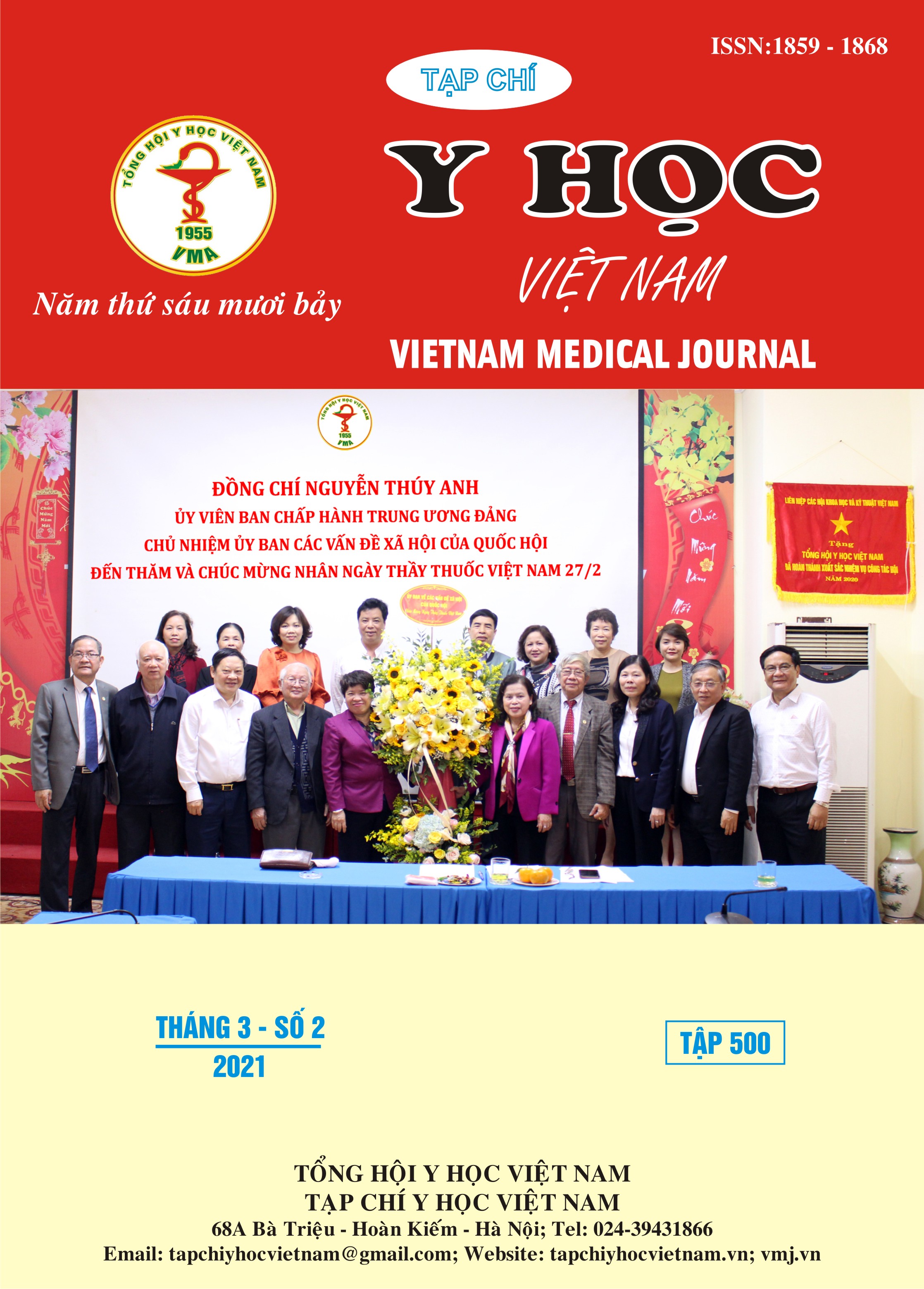GUSTATORY CHANGES AFTER SURGERY FOR CHRONIC SUPPURATIVE OTITIS MEDIA
Main Article Content
Abstract
Objectives: To investigate the gustatory changes after surgery for chronic suppurative otitis media. Patients and Methods: A prospective study was conducted on 58 patients (15 men and 43 women, aged from 18 to 68 years), who were diagnosed with chronic suppurative otitis media and underwent tympanoplasty. All patients were evaluated for taste thresholds with four basic tastes (sour, sweet, salty and bitter) before and after surgery. Results: The rate of patients who had taste changesafter surgery was 15.5% at one day, 13.8% at one week, 3.4% at one month, and 0% at three months. Taste thresholds of patients in the groups of intact, stretched, and sectioned chorda tympani increased, in which only patients in the sectioned nerve group had their thresholdssignificantly elevated at one day with sour, salty, bitter tastes (p <0.05), at one week with sweet, salty, bitter tastes (p<0.05). At one month, the taste thresholds for salty and sour tastes were still greater than before surgery (p>0.05). Conclusions: Changes in taste thresholds mainly occurred within one month after surgery. Taste thresholdsproportionally increased with the degree of chorda tympani injury, in which the salty and sour tastes were most affected. After three months, there was no patient toreportchanges in taste sensation.
Article Details
Keywords
gustatory, chorda tympani, chronic suppurative otitis media
References
2. Gedikli O, Doğru H, Aydin G, et al. Histopathological changes of chorda tympani in chronic otitis media. Laryngoscope. Apr 2001; 111(4 Pt 1):724-727.
3. Berteretche MV, Eloit C, Dumas H, et al. Taste deficits after middle ear surgery for otosclerosis: taste somatosensory interactions. European journal of oral sciences. Oct 2008;116(5):394-404.
4. McManus LJ, Dawes PJ, Stringer MD. Clinical anatomy of the chorda tympani: a systematic review. J Laryngol Otol. Nov 2011;125(11):1101-1108.
5. Landis BN, Beutner D, Frasnelli J, et al. Gustatory function in chronic inflammatory middle ear diseases. Laryngoscope. Jun 2005;115(6):1124-1127.
6. Huang CC, Lin CD, Wang CY, et al. Gustatory changes in patients with chronic otitis media, before and after middle-ear surgery. The Journal of laryngology and otology. May 2012;126(5):470-474.
7. Goyal A, Singh PP, Dash G. Chorda tympani in chronic inflammatory middle ear disease. Otolaryngology--head and neck surgery: official journal of American Academy of Otolaryngology-Head and Neck Surgery. May 2009;140(5):682-686.
8. Ziylan F, Smeeing DPJ, Bezdjian A, et al. Feasibility of preservation of chorda tympani nerve during noninflammatory ear surgery: A systematic review. The Laryngoscope. Aug 2018;128(8):1904-1913.
9. Sakagami M, Sone M, Tsuji K, et al. Rate of recovery of taste function after preservation of chorda tympani nerve in middle ear surgery with special reference to type of disease. The Annals of otology, rhinology, and laryngology. Jan 2003; 112(1):52-56.


